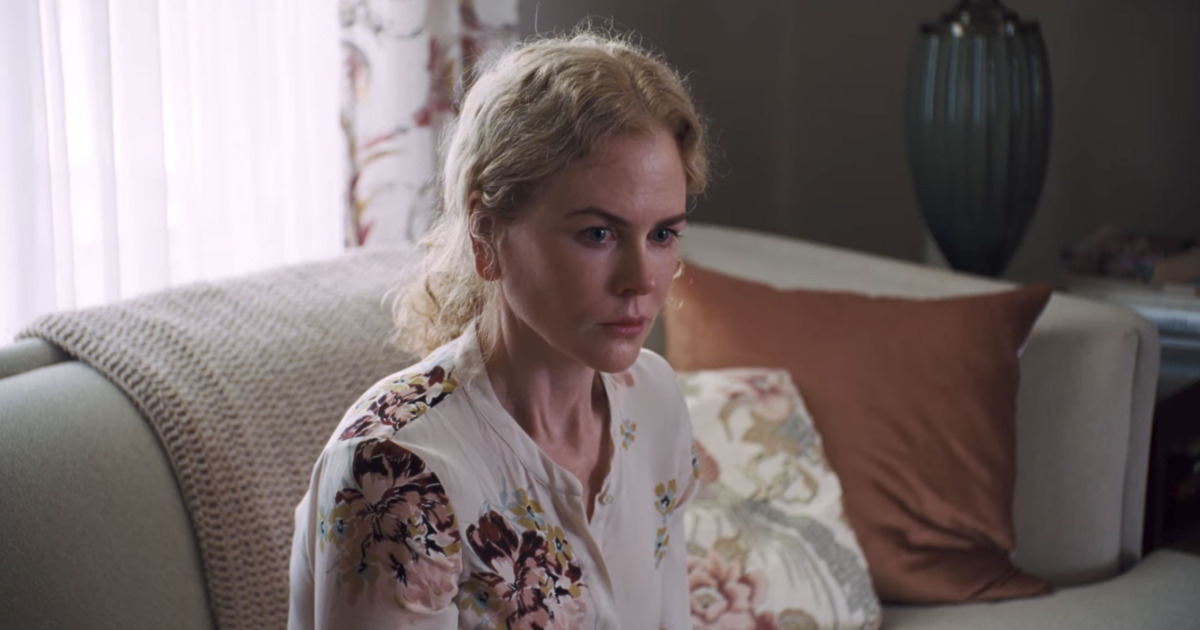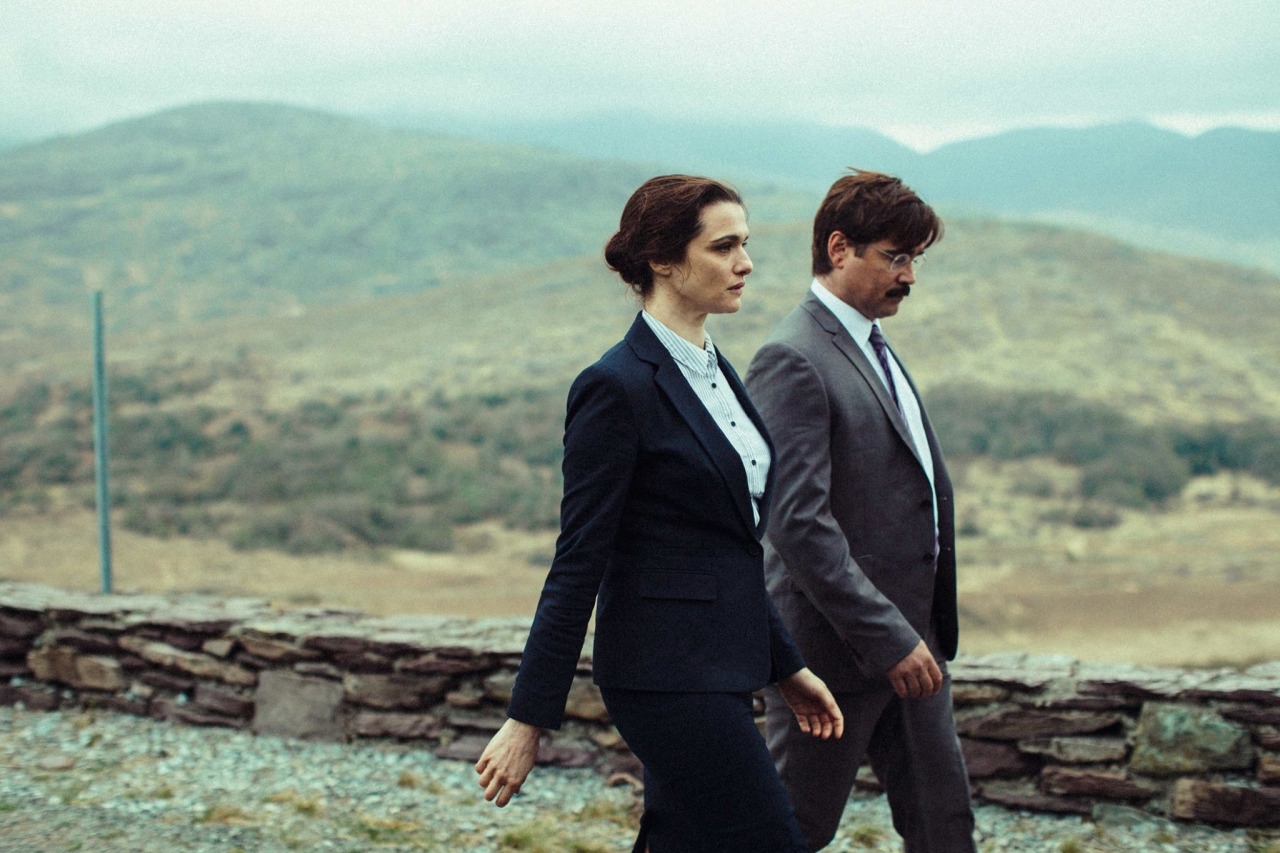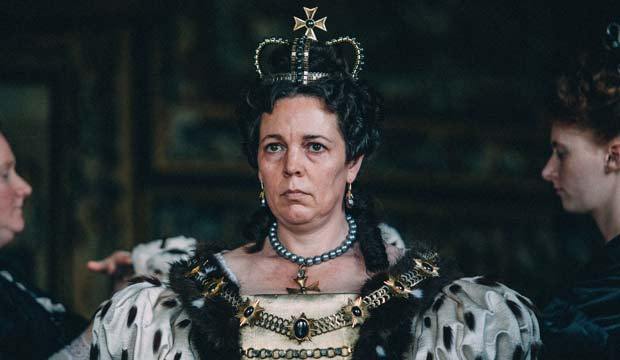4. The Killing of a Sacred Deer (2017)

Lanthimos’s second English-language feature saw his reunion with leading-man Colin Farrell, in a modern interpretation of the Ancient Greek tragedy Iphigenia in Aulis by Euripides.
Steven Murphy, (Farrell), is a heart surgeon who has developed a mysterious friendship with a teenage boy named Martin, (played by Barry Keoghan). Steven buys Martin a watch and invites him round for dinner to meet his wife Anna, (played by Nicole Kidman), and his two children, Kim and Bob. After this, Martin starts constantly contacting Steven, and even starts dating his daughter. Steven agrees to come to Martin’s house for dinner.
Here, Martin’s Mother, (played by Clueless star Alicia Silverstone), makes romantic advances upon Steven. When the Murphy children lose the use of their legs, Martin reveals that his father died in a surgery that Steven himself performed. Martin instructs Steven to kill a member of his own family, to “balance” his father’s death. He warns him that if he doesn’t, his family will die in three stages: paralysis, refusing food, then bleeding from the eyes.
Whilst Farrell’s deadpan delivery has become a welcome staple of Lanthimos’s recent films, it is the performance of Keoghan that shines. Keoghan’s Martin is vengeful, unpredictable, broken, and psychopathic. Martin has the most chilling, hallucinogenic lines of the film, his delivery toeing a fascinating tight-rope between naivety and Satanic evil.
Furthermore, Martin’s back-story resonates with episodes of the actor’s real life-story – his real-life mother died when he was young. Keoghan’s performance single-handedly tautens the narrative tension of the entire film. He bends Steven’s patience so far, he eventually forces it to snap.
Moreover, Kidman preternaturally inhabits the role of the prim suburban housewife, Anna, which seems a much-darker incarnation of her role in The Stepford Wives. Her proper demeanour is wonderfully juxtaposed against the dark psychology she evokes through her piercing, terrified stares.
Along with its pristine, Hitchcockian screenplay, The Killing of a Sacred Deer is notable for being Lanthimos’s first foray in to the possibilities of wide-angle and fish-eye lenses. The director has described this decision as a way for him to invoke a feeling of claustrophobia or tension in his viewer.
What is more, he makes an effective case for the use of zooms, despite many filmmakers and moviegoers often condemning its use outside of the documentary medium. However, this film uses them in a very slow and chilling manner, often zooming out of close-ups of character’s faces in to an extreme long shot of the setting around them.
This, in turn, creates a an atmosphere of loneliness, or paranoia, mirroring the character’s own inner states. Whether tracking through a park, framing a bed in the Murphy’s mansion, or following Steven down the long hospital corridors, the film’s unusual cinematography undoubtedly sustains an feeling of curdling apprehension throughout its duration.
Lanthimos’s adoption of a classical narrative structure results in a film that condenses the darkness and strangeness of his earlier works in to a delectably-macabre parable of revenge. That said, the film is excruciatingly difficult to watch at times, even for those familiar with the psychological-thriller genre, due to its uncannily dark content, made all the more eerie by Lanthimos’s signature child-like dilalogue.
As with all Lanthimos’s writing, he is not attempting to inhabit a particular genre. Here, either flirts with the thriller genre, subverts it, or utterly disregards it. In it place, is Lanthimos’s own, instinctual personal flair at his most terrifying.
3. The Lobster (2015)

“When we raise our left arm it means ‘I want to dance in your arms.’ When we make a fist and put it behind our backs it means ‘let’s fuck.’ The code grew and grew as time went by and within a few weeks we could talk about almost anything without even opening our mouths.”
-Rachel Weisz as the ‘Short-Sighted Woman,’ in The Lobster.
In Lanhimos’s first English language feature, The Lobster, the director subverts the Science-Fiction genre, bending it with his own romantic sensibilities. This film won Lanthimos the Jury Prize at Cannes, and saw him nominated for his second Oscar, this time for Best Original Screenplay. Once again, it stars Farrell as the lead, with the addition of other master-character-actors: Ben Whishaw, John C. Reilly, Olivia Colman, Léa Seydoux and Michael Smiley.
After his wife leaves him, David is checked in to a compulsory hotel, where single-people must find a partner within 45 days, or else they shall be turned in to an animal of their choice. After enduring a rigid itinerary of hunting loners in the woods, and feigning the same superficial traits as another person in order to leave, David eventually escapes. He is accepted in to the militia of forest-dwelling loners, who live by strict rules themselves.
If one loner is caught engaging in anything of a romantic nature with another loner, they will be subjected to the “red kiss,” or even the dreaded “red intercourse.” However, David soon develops a crush on a fellow loner, played by Rachel Weisz.
The film’s its extreme absurdity, both in its premise and its dialogue, makes it perhaps Lanthimos’s funniest film. As with all Lanthimos’s work, its colourful ensemble cast-members compliment each other perfectly.
At the hotel, David, who wears glasses, is conditioned to believe that suitable partners must have the same traits as oneself if the relationship is to succeed. He discovers that his short-sighted crush, (Weisz), has been accepting gifts of dead rabbits from another man.
David confronts Michael smiley’s character, demanding to know whether he is short-sighted or not. “I’m not short-sighted,” replies Smiley, “I don’t understand why you won’t believe me. I can see really well. I used to be a pilot.”
Farrell’s performance is hilariously deadpan and awkward, and his perpetual dissatisfaction steers the audience’s curiosity and empathy through surrealistic universe of the film. John C. Reilly’s performance is particularly notable, as his sweet and comic persona is juxtaposed against the cruelty of the hotel, such as when he is forced to hold his hand in a toaster for masturbating.
In an age where romance has been replaced by online dating, through the film’s violence and surrealism, Lanthimos delivers a story about pure, innocent love, fighting to survive in an oppressive, ideologically-twisted world.
Farrell naturally inhabits the role of the everyman, drawing us in to his embarrassment and dissatisfaction, whilst Weisz proves to be more than just an intelligent, comedic love-interest. Watch this film and consider the ‘hotel’ of ideology that may be controlling you.
2. The Favourite (2018)

Lanthimos has so-far explored surrealist Greece, dystopian Ireland, and American suburbia. However, his most recent release, The Favourite, sees him re-imagine a period which, the director himself, the actors, and indeed, the British public, had no foreknowledge of: the reign of Queen Anne (1702 – 1707).
Along with My Best Friend, this is the only other film, where Lanthimos has not served as screenwriter. The screenplay had been in development since the late-nineties by Deborah Davis. She later approached Lanthimos with the manuscript, who responded warmly to its story.
The film follows Abigail, (played by Emma Stone), a disenfranchised aristocrat who arrives at the palace of Queen Anne, (played by Olivia Colman), to work as her servant. She finds the Queen to be riddled with gout, incapable of strategising the war with France, and mourning for the loss of her stillborn children, which she replaces with an army of rabbits.
Abigail soon becomes aware of a sexual relationship between the Queen and her caustic confidante, Sarah, (played by Rachel Weisz). Becoming friends with the Queen, Abigail is promoted to lady of the bedchamber. Then, she too falls for the Queen’s seduction, and is thrust in to a romantic and political scramble for power, as Sarah retaliates with sly vengeance.
This film pertains, for once, to the fatal flaws and power-struggles of female, rather than male, protagonists, narrowing sexuality in to a purely feminine realm. The male characters in this film are buffoonish, and entirely marginal. Though the film is bursting with hugely-comedic dialogue, as Mark Kermode points out, it is underpinned by a persistent “air of tragedy,” chiefly in the form of the circumstances of the Queen herself.
Olivia Colman’s Queen Anne is often hilarious and sad in the same breath, such as when she screams at a boy on watch: “Did you’s looks at me? …Look at me! -How dare you? Close your eyes!” Both Colman and Weisz deliver the finest performances of their careers. They endear and disgust the audience, with a uniquely-female strain of malice.
The scenes are compact and focused, the accentuated period costume is exceptional, and, expanding upon his experimentation on The Killing of a Sacred Deer, Lanthimos once again makes use of the fish-eye lens.
This decision has received criticism, though the director has defended its use by illustrating how it creates a feeling of claustrophobia, that is conducive with the reclusiveness of the Queen, and the dangerous trap that Abigail finds herself snared in. For all its wonder, the film’s ambiguous ending will leave some frustrated, as will the bending of historical accuracy for artistic decadence.
Nevertheless, British cinema hasn’t seen a period drama this original since the days of Ken Russell and Peter Greenaway. More broadly, whether intentionally or not, the film serves as a satirical mirror up to the chaos of contemporary British politics. Ultimately, this is a film sure to illuminate brilliance in to the darkest corners of your mind, and serve as a masterclass in how to win any argument, with maximum style and wit.
1. Dogtooth (2009)

Fellow surrealist David Lynch described Dogtooth as “his favourite film in recent years,” and dubbed it “a fantastic comedy,” in an interview with the L.A. times. The film catapulted Lanthimos in to fame and critical appraisal, earning him his first Academy Award nomination. This, more than any other title on this list, awed audiences with Lanthimos’s sharp blend of absurdist hilarity and sociological horror at its very best.
Inspired by the 2008 case of Josef Fritzl, Dogtooth tells the story of a factory owner, (played by Christos Stergioglou), who has imprisoned his three children, all now in their twenties, in a fenced compound for the entirety of their lives. He promises to release them once they loose a dogtooth. With no knowledge of the outside world, the children are taught many erroneous facts. Their father tells them that the most dangerous animal in the world, a cat, killed their unseen brother.
This leads the ‘Son,’ (played by Christos Passalis), to kill a kitten that has wandered in to their garden with a pair of hedge clippers. His Father habitually imports the factory’s female security guard in to the compound to have sex with his Son. Meanwhile, the daughters, (played by Angeliki Papoulia and Mary Tsoni), develop a lust for one another, whilst one of them attempts to escape.
Dogtooth signifies the greatest possibilities in avant-garde cinema. Rather than always progressing in a traditional cause-and-effect manner, the narrative exists as an impression, a portrait of a time and place, in a similar, but superior manner to his debut, Kinetta.
What drives it forwards is the endless curiosity of the premise, and the unpredictability demonstrated in the brainwashing methods the father exacts upon his family. What is omitted is almost more important than what is included in Dogtooth, and Lanthimos ignites every route of possibility in his viewer’s imagination.
This is ameliorated by the cinematography of Lanthimos-regular Thimios Bakatakis. Bakatakis employs static tripod shots and long takes as peep holes in to the intriguing and deeply-disturbing world of this family.
Not only does the emittance of Bakatakis’s framing stir intrigue, but Lanthimos’ s delivery of exponentially-extraordinary events has continually satisfied and impressed audiences since its release. The juxtaposition between the minimalism of the camerawork and the extremity of the circumstances helps slow the experience down to real-time, offering an intimate observation of the psychology of the victims and their perpetrator.
The film exists in a tone that is entirely its own, though its mise-en-scène is reminiscent of the sensitive adolescent anxiety and blissful summer lethargy that Sofia Coppola cultivates in The Virgin Suicides. With Lanthimos’s writing at his most focused, horrific, and comedic, the performances to pay particular attention to are Passalis as ‘Son’ and the late Tsoni, as ‘Younger Daughter,” whose portrayals acutely evoke the characters’ sensitivity and worry.
This, more than any other Lanthimos film, is the best example of his ‘science experiment’ approach to cinema. Dogtooth exists almost like a documentary made by anthropologists about a crime, like the Frizl case. It is a film that will make you understand human beings better. Its sophisticated, minimalistic execution provides a fresh antidote to the unfocused popcorn flicks that dominate movie theatres today.